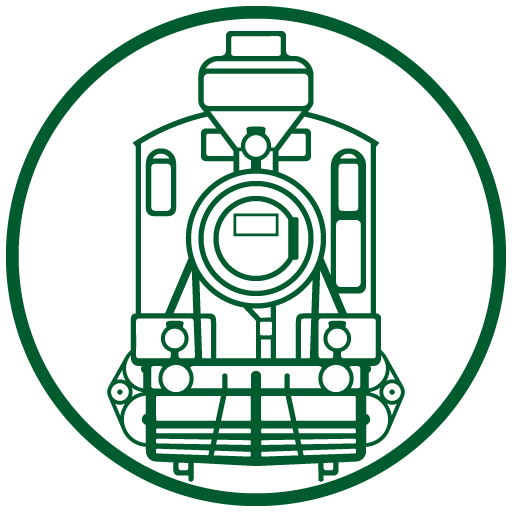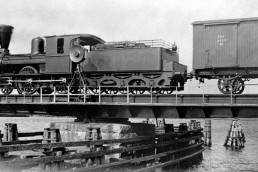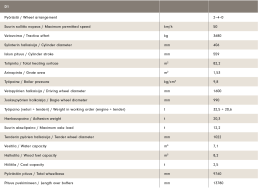When the Finnish state bought the private Hanko Railway in 1875, in addition to the 11 locomotives already described (classes A4 and C3), they obtained two Schwartzkopff-built 2–4–0 engines. These were part of an order of 37 locomotives for the Russian Kiev–Brest Railway, nos. 41–77. Locomotives 75 and 76 were transferred to the Hanko Railway and named GISIKO and ARNOLD. These names were removed by the SVR, which adopted the works numbers 294 and 295 as running numbers; they were renumbered 110 and 111 in the same year and again in 1887 as nos. 72 and 73. They were classified D1 in 1885.
The boiler of this pair of simple expansion engines had a dome, a copper firebox and brass tubes. They had plate frames and inside cylinders; steam distribution was by Allan inside valve gear with slide valves. They were equipped with a steam brake. Sandboxes were located beneath the low, straight running plate. The headlamps were paraffin lit. These engines were converted by the SVR to burning wood instead of coal, and the six-wheel tenders were the same size as those attached to the C3 class freight engines. Train heating equipment was fitted at the beginning of the 20th century. The brass tubes in the boiler on no. 72 were replaced by steel ones in 1910.
Under SVR ownership, these locomotives were at first retained on the Hanko–Hyvinkää line although they saw little use. Fairly soon afterwards, they started to wander from depot to depot in southern Finland wherever the need for extra locomotives arose. From 1901 onwards they were mainly used on permanent way workings, with only some limited turns on normal service trains. No. 73 was condemned in 1912 and scrapped one year later.
No. 72 was stored between 1913 and 1916, but returned to permanent way and works trains in conjunction with the building of the present Helsinki station. It was placed in store in 1922. As the final surviving engine of the Hanko Railway, it was scrapped in Viipuri in 1924. These engines had very low mileages in the 1900s.









